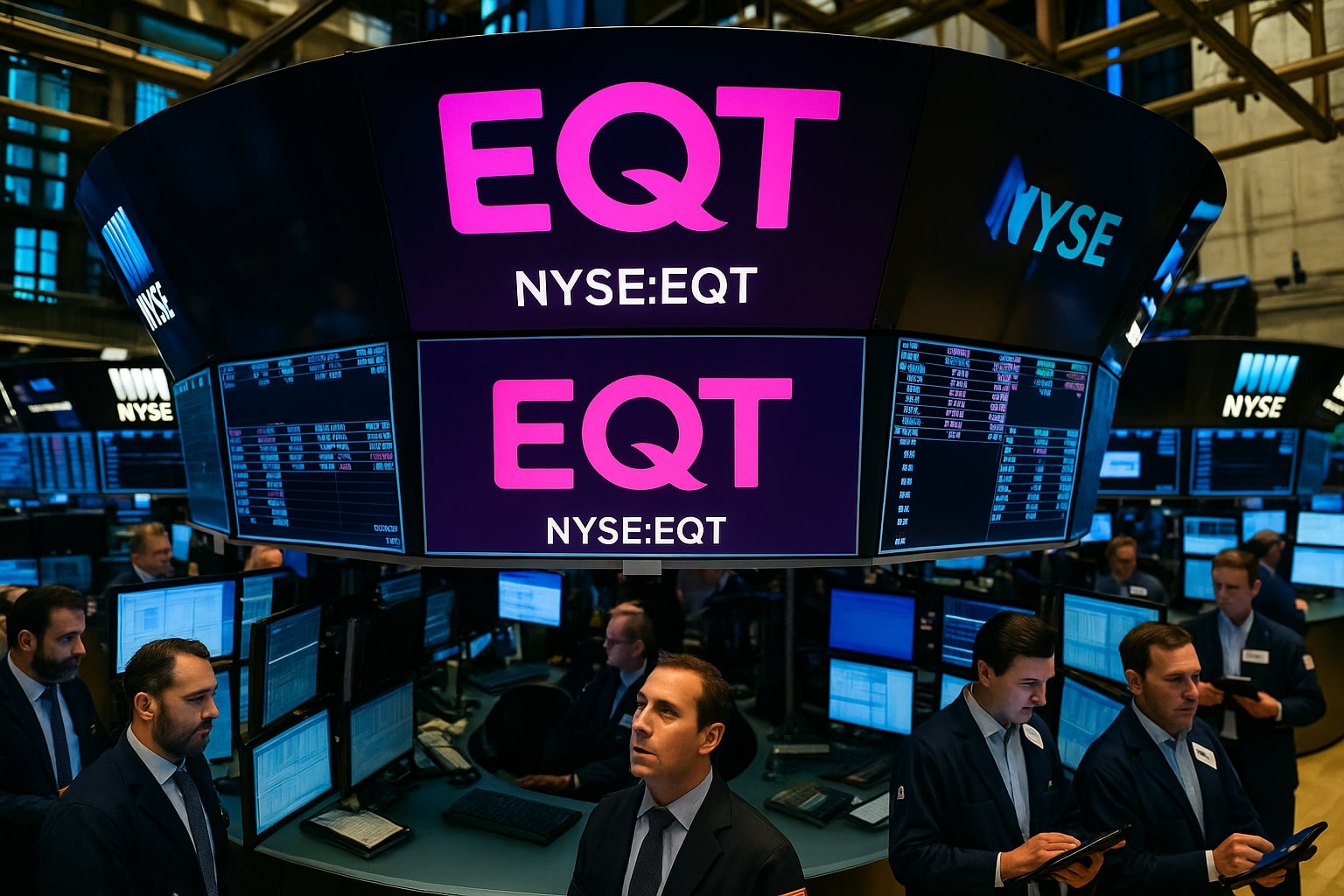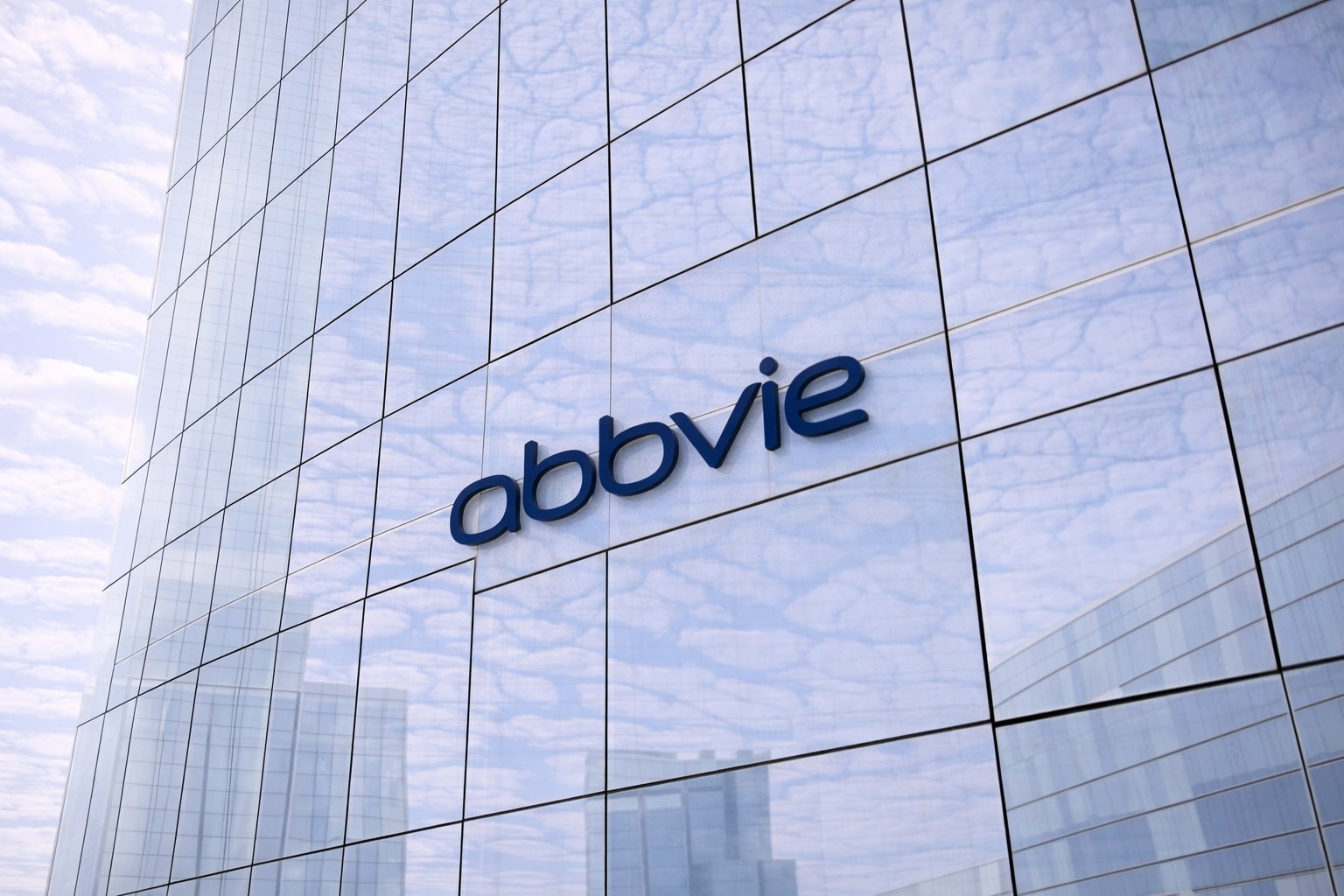
EQT Stock Forecast: Natural Gas and LNG Growth Push NYSE:EQT Toward $71
Appalachia Reserves, Debt Reduction, and Data Center Demand Boost EQT Outlook | That's TradingNEWS
EQT Corporation (NYSE:EQT) Positioned for Natural Gas Upside
EQT Corporation NYSE:EQT has become one of the most important benchmarks in the U.S. natural gas industry, and the company’s trajectory is closely tied to the ongoing transformation in energy markets. Shares closed at $51.84 on August 29, down 0.99% for the day, with a 52-week range of $31.46 to $61.02. The company’s $32.3 billion market capitalization reflects the resilience of a pure-play gas producer at a time when demand from data centers, LNG expansion, and electrification is colliding with constrained supply. Quarterly revenue has surged 111.5% year-over-year to $7.1 billion, with EBITDA at $4.53 billion and net income of $1.14 billion. EQT trades at 27.28x trailing earnings, but forward estimates bring that multiple down to 17.15x, underscoring the market’s expectation for accelerating earnings growth into 2026.
Natural Gas Dynamics Driving EQT’s Growth
The structural backdrop for NYSE:EQT is defined by an imbalance between demand and supply. Demand for electricity is expanding 4–5% annually, compared with 1–2% in prior decades, driven by AI-powered data centers and climate-related electrification. At the same time, renewable capacity growth faces tax headwinds, nuclear remains years away, and coal is on decline. That leaves natural gas as the immediate bridge fuel, while OPEC output policies and peak shale oil constraints limit associated gas supply. Added to this is the rise of U.S. LNG exports, expected to expand beyond 18 Bcf/day, which tightens domestic availability. These converging forces support U.S. gas prices breaking closer to global parity. At strip prices of $3.20/MMBtu, EQT expects to generate about $13 billion in free cash flow from 2025–2029, an annualized yield near 8%, but if prices trend toward $5/MMBtu, EQT’s valuation could rerate dramatically higher.
Operational Scale and Portfolio Strategy
EQT’s second quarter 2025 production reached 568 Bcfe at $2.81 per Mcfe, delivering $1.03 billion in adjusted EBITDA and $240 million in free cash flow despite $134 million in one-off class action costs. The company’s breakeven stands near $2/MMBtu, positioning it among the most efficient gas producers in North America. With more than 4% of U.S. natural gas reserves concentrated in Appalachia, EQT’s vertically integrated model spans upstream wells, midstream pipelines, and distribution. The acquisition of Equitrans has expanded its infrastructure footprint, creating long-term synergies and strengthening end-to-end control. Cost efficiency gains are visible—wells are achieving 20% performance outperformance and costs per well have declined nearly 10%. EQT projects $250 million in additional annualized free cash flow by 2029 from operational improvements alone.
Financial Performance and Balance Sheet Outlook
EQT’s balance sheet remains a focal point. Total debt stands at $8.32 billion, against $555 million in cash, with leverage expected to fall below $5 billion by the end of 2026. Current ratio is 0.71, reflecting working capital tightness, but strong cash generation is offsetting near-term liquidity concerns. Operating cash flow over the trailing twelve months reached $4.33 billion, with levered free cash flow at $1.25 billion. Dividend distribution is modest, at $0.63 per share annually (1.22% yield), but management has prioritized debt reduction and strategic flexibility over aggressive payouts. Analysts expect EPS to climb from $3.15 in 2025 to $5.27 in 2026, a 67% increase, driven by expanding LNG contracts and higher utilization of existing reserves.
Valuation Sensitivity and Market Targets
Consensus price target for NYSE:EQT sits at $63.16, but bullish projections reach as high as $80 under a $5/CF gas price scenario. Bearish outcomes under a $2.50/CF environment could pull shares to $38, underscoring the commodity leverage embedded in the stock. At present multiples, EQT trades at 8.57x EV/EBITDA, compressed relative to its five-year range, while its PEG ratio of 0.44 suggests undervaluation relative to growth. Institutional ownership remains high at 91.85%, with only 0.62% held by insiders. Short interest is low at 2.94% of float, indicating limited bearish conviction. Insider activity can be tracked here, offering a deeper view into management’s conviction at current price levels.
Growth Catalysts: LNG Expansion and Data Center Demand
EQT is positioning itself for secular demand from LNG and data centers. Roughly 55 GW of announced new data center capacity is located in its core Appalachian footprint, equivalent to 7.5 Bcf/day of new demand. LNG growth represents another transformative driver, with U.S. capacity expected to nearly double this decade. EQT’s integrated model ensures it can capture upside through both production and midstream value chains, and management is exploring M&A to extend exposure into export infrastructure. Unlike diversified oil majors, EQT’s pure-play gas strategy provides greater torque to rising domestic and global gas prices.
Risks and Market Headwinds
The most material risk for EQT is a sustained downturn in gas prices below $3/CF. This could stem from oversupply, delays in LNG capacity build-outs, or reduced electricity demand if data center construction slows or alternative baseloads like SMRs scale faster than expected. Regulatory risks also remain, particularly around environmental permitting in Appalachia and potential shifts in federal energy policy. However, EQT’s hedging strategy provides limited near-term downside protection, with less than 10% of 2026 production hedged, leaving the company highly exposed to market prices.
Investment View on NYSE:EQT
With natural gas demand structurally increasing, debt reduction progressing, and valuation multiples still at discount levels, EQT offers significant leverage to rising U.S. gas prices. At $51.84, the stock trades at only 17x forward earnings despite projections for EPS growth exceeding 65% next year. Free cash flow generation is robust enough to fund debt reduction, dividends, and potential buybacks while keeping optionality for LNG expansion or strategic M&A. Considering the balance of risks and catalysts, EQT appears undervalued relative to growth potential, and the stock justifies a Buy rating with a 2026 fair value range of $61–$71, extending to $80 if natural gas sustains $5/CF levels.
That's TradingNEWS
Read More
-
AbbVie Stock Price Forecast - ABBV at $229 Turns the Humira Cliff Into a 2026 Growth Engine
02.01.2026 · TradingNEWS ArchiveStocks
-
XRP Price Forecast - XRP-USD Nears $2 as $1.80 Support and Shrinking Supply Point to $2.60 Target
02.01.2026 · TradingNEWS ArchiveCrypto
-
Oil Price Forecast - Oil Slide Into 2026: WTI Stuck at $57, Brent at $60
02.01.2026 · TradingNEWS ArchiveCommodities
-
Stock Market Today: Nasdaq Hits 23,467 as Nvidia (NVDA), Micron (MU) and Baidu (BIDU) Drive AI Surge
02.01.2026 · TradingNEWS ArchiveMarkets
-
GBP/USD Price Forecast: Pound Holds 1.3450 as Fed–BoE Split Keeps Bulls Aiming at 1.37
02.01.2026 · TradingNEWS ArchiveForex


















